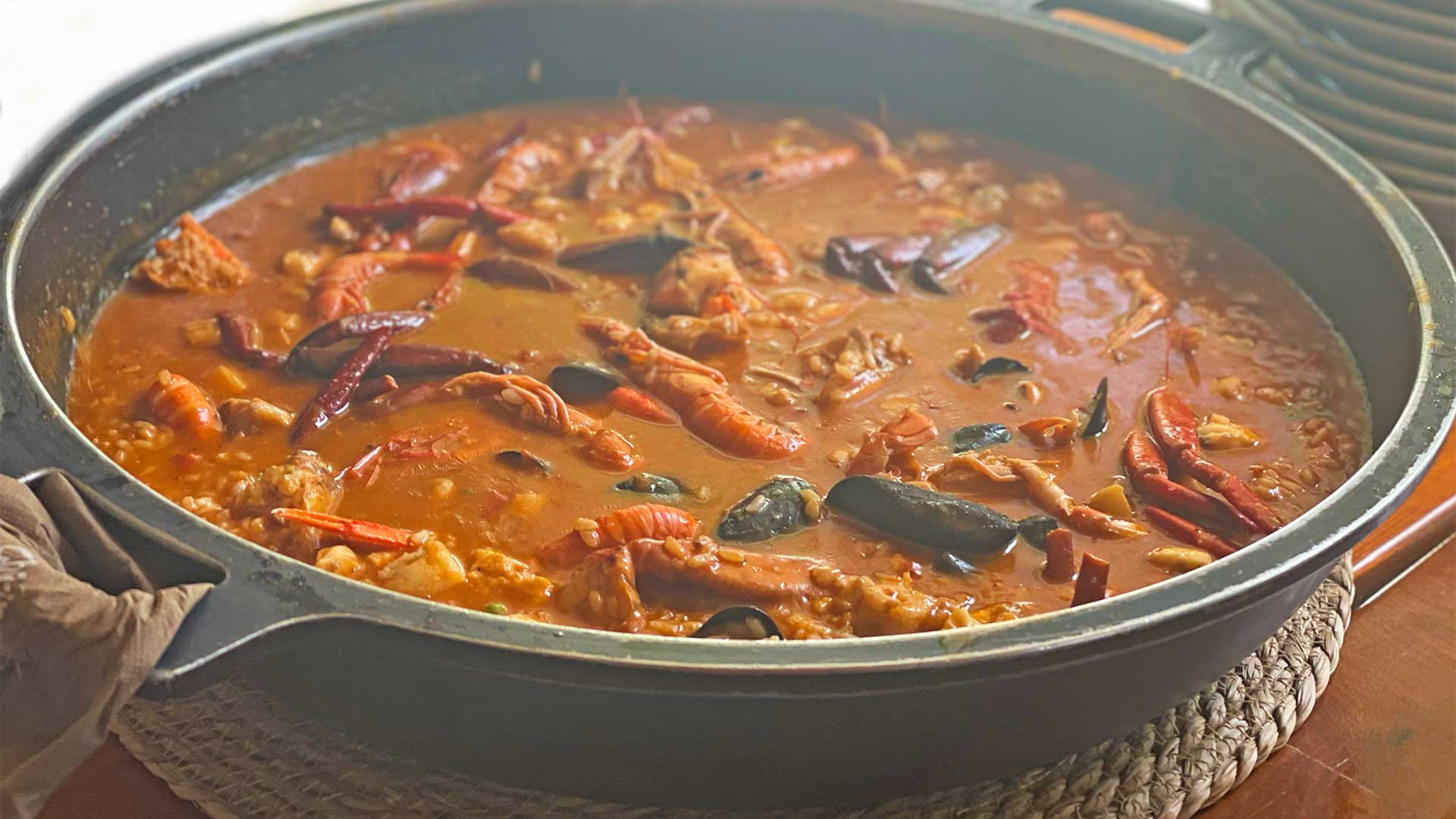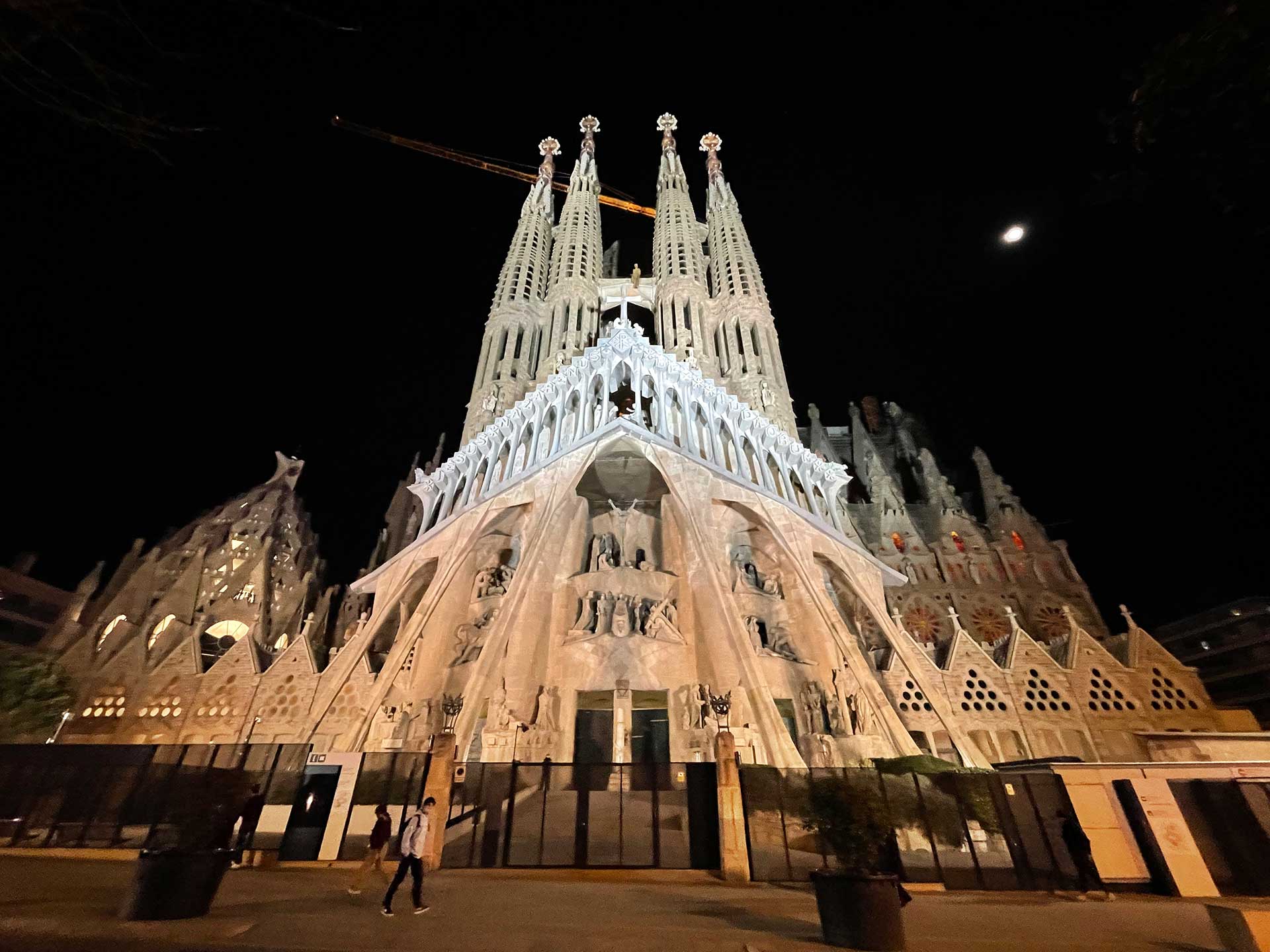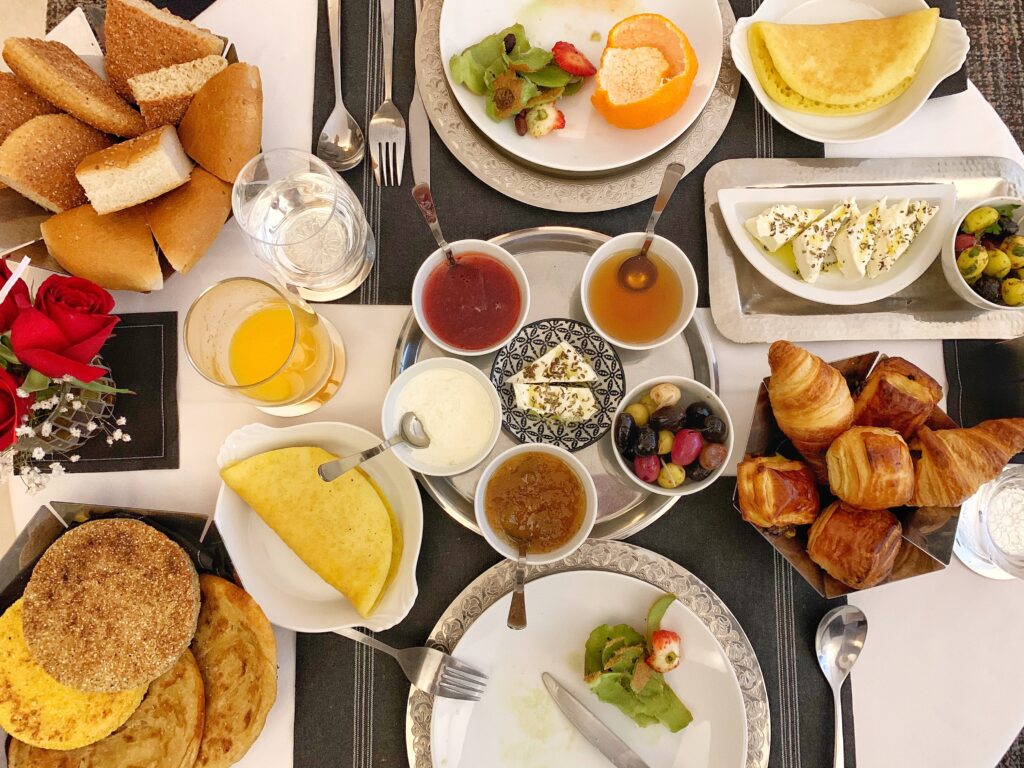Nestled in the northeastern part of the country, Catalonia is, without a doubt, one of the most dynamic tourist destinations in Spain.
Thanks to thousands of years of history, Catalonia has its own unique customs, traditions, and even language — and is just waiting to be discovered. Although most people are introduced to the Catalan lifestyle when they visit Barcelona, there’s so much more below the surface.
There are thousands — if not millions! — reasons to visit Catalonia, as this region is guaranteed to delight and inspire any guest.
First off, there’s the food. Oh yes, the food! For starters, Catalonia is proud of its Mar i muntanya (sea and mountain) cuisine. Start your trip at sea level, where some of the freshest and juiciest seafood is found. From there, climb your way up to the top, where olive groves, vineyards, and local delicacies await. Catalonia is, after all, home to the Pyrenees mountain range!
No Catalan dish is complete without an aperitif like vermut, or a chilled glass of cava on a hot day. In fact, the region is bursting with world-famous wineries and breweries that have honed their craft over hundreds of years.
Add fun-filled festivals, the sunny Costa Brava shores, and eclectic architecture into the mix, and you have just a few reasons why Catalonia should be your next destination. Here are more to get you started:
1. Barcelona: Visit Spain’s Most International City
As the capital and largest city of Catalonia, it’s only fitting to begin our journey in Barcelona.
This dynamic metropolis has been at the forefront of culture, gastronomy, and art for centuries, and as such, is an excellent embodiment of Catalonia — it’s no wonder why more than 20 million tourists visited in 2019!
For starters, Barcelona is one of the best culinary destinations in Europe. The city has the most Michelin stars in all of Spain and is home to 10,000 restaurants within its borders. Barcelona’s dining scene is accentuated by the disciples of elBulli’s legendary Ferran Adrià, who have opened their own establishments.
After eating your way through Barcelona’s best restaurants, it’s time to see the city’s symbols. Make the pilgrimage to the Sagrada Família, or wander through the hidden alleyways of Gothic Quarter. Other must-do experiences include a leisurely amble along La Rambla (see what we did there?), marveling at Gaudí’s masterpieces, and flexing your cultural muscles at the Barcelona Museum of Contemporary Art. If there’s one phrase to sum it all up, we’d like to respectfully take Audrey Hepburn’s famous line and tweak it to Barcelona is always a good idea!
2. Sip Locally Made Sparkling Wine
Catalans believe that even the smallest moments in life should be celebrated, and what better way to do so than with a delicious glass of cava?
This unique drink was created in the mid-1800s, after a local winemaker traveled to France and observed the methods used to make champagne. He then took an old classic and added a modern twist by using white grapes. Traditionally, Macabeu, Xarel·lo, and Parellada are the most popular varieties used, although new concoctions are becoming more common.
Cava has truly earned its place at restaurants and celebrations alike thanks to its tradition and history — so much that it even earned a Denominación de origen (DO) status in 1986. Why not travel to Catalonia and try this acclaimed drink yourself?
3 – Eat Authentic Seafood Rice by the Beach
Although seafood is a popular ingredient across the country, it holds a special place in the heart of Catalans. That’s because the Costa Brava is part of the Catalonia region and, besides its legendary beaches, the coast is also famous for its fresh and delectable seafood.
From lobster to gambas, cigalas, squid, tallarinas and hundreds of daily catch fish, Costa Brava has taken the traditional farm to table concept and reinvented it into a heritage of boat to plate.
The best way to experience the region’s mouthwatering seafood is by doing as the locals do: visit a cala (hidden beach), where Catalonian fishermen hand off their catch of the day to the local chefs, and order a rice or suquet. The lattest is the authentic seafood stew made up of shrimp and chunks of juicy fish filet, topped with a picada sauce and garnished over potatoes.
4. Dive Into the Surreal World of Dalí
Most people figured that Salvador Dali was born in Spain, yet few know that he was a native Catalonian! Indeed, this world-famous surrealist was born in Figueres and spent most of his youth in the region.
Furthermore, the native landscapes inspired many of Dali’s works, and his Catalonian heritage meant that he remained passionate about food his whole life — he even created a surrealist cookbook titled Les dîners de Gala!
Dali aficionados and foodies alike will find the best of both worlds in the artist’s birthplace: Figueres is home to the Dali Theatre Museum, which houses more than 1,500 paintings, sculptures, photos, and other artwork made by the surrealist.
After enjoying a day of culture and creativity, be sure to visit the Castell de Perelada, just a few minutes’ drive from the museum. Besides its stunning architecture, this castle has been producing wine for hundreds of years — including Dali’s favorite sparkling rosé
5. Cadaqués: Immerse Yourself in the Mediterranean Lifestyle
There’s no better place to get a taste of authentic Catalonian culture than a trip to the charming town of Cadaqués. It has a little bit of everything, from ornate buildings to gastronomic delights, a laid back atmosphere, and, of course, the Mediterranean coastline.
Despite its small size (there are only 2,800 inhabitants!), Cadaqués is sure to enchant visitors with its offers. The town is chock-full of quaint alleys, picturesque beaches, and cafes that feel as if they were created for the sole purpose of people watching!
While we’re still on the topic of Dali, it’s worth mentioning Cadaqués’ most famous attraction: Dali’s house in Port Lligat. Although he was born in Figueres, Dali moved west and spent more than half of a century living in the little fishing port. After his death, the house was turned into a museum, and now visitors can see his eccentric and playful decor for themselves.
Whether it’s visiting on a day trip from Barcelona or spending an entire week soaking up the Spanish sun, Cadaqués is guaranteed to captivate everyone who visits.

6. Vermouth Hour
What time is it? l’Hora del vermut, of course!
While most might take this phrase literally, vermouth is having its hour in the spotlight as well. Once shunned as being passé, vermouth is in the midst of a radical revival that has made it one of the most popular aperitifs in bars across Catalonia (and, perhaps, the world!)
Locals take their vermouth very seriously, and the ritual of going out to grab a glass with friends even has a special phrase — fer el vermut, or ‘do the vermouth’ in Catalan.
Best of all, there’s no right or wrong way to fer el vermut. Most locals enjoy their vermouth during that sweet spot between breakfast and lunch, and typically with a light snack of seafood — mussels, clams, conservas, and baby squid are popular accompaniments

7. The Heroic Wines of Priorat
Catalonia is full of noble protagonists and heroic figures, conquerors, and brave warriors— albeit, not all of them are human. Enter: the wines of Priorat.
At first glance, Priorat looks like any other comarca (country) in Catalonia, with jutting hills, idyllic towns, and the famous Mediterranean sunshine. However, the story of Priorat is much more complex…
Priorat’s history began in the 1100s, when monks settled in the region and began making wine, and the tradition has been woven through the region’s tapestry ever since. What really makes the wines of Priorat unique are the conditions in which they are grown: each of the dozen vineyards are situated hundreds of meters above sea level, with slopes of 15 to 60 percent.
That’s not all: many of the grapes harvested were grown from old vines with low yields, which give Priorat wines their signature intensity.
Despite the brutal conditions of this region, Priorat constantly produces some of the world’s best wine — hence its heroic title. We’ll toast to that!

8. The Rise of Modernism and Gaudí
When you think about it, it seems as if every great city is associated with an art movement: Florence spurned the Renaissance, Impressionism made its mark in Paris, and Dadaism was born in Zurich.
Of course, no list would be complete without Catalan Modernism. This artistic style quickly gained popularity at the 1888 World’s Fair in Barcelona and, over the years, was bolstered by famous artists like Lluís Domènech i Montaner, Santiago Rusiñol, and Josep Puig i Cadafalch.
However, one man in particular helped catapult the style to new heights: none other than Antoni Gaudí. Often referred to as the Grandfather of Modernisme, Gaudí’s works have become some of the biggest tourist attractions across Barcelona.
Besides the awe-inspiring La Sagrada Família, there are dozens of Gaudí’s works in Barcelona, including Casa Vicens (the artist’s first building), Casa Mila, Park Güell, and Casa Batllo. Best of all, visitors can tour each of the aforementioned attractions!
9. Pà amb Tomàquet to Fideuà and Everything in Between!
If you’ve ever wondered what is the most popular Catalan dish, there’s a good chance that Pa amb tomàquet is a top candidate.
Known by many Catalans as the ultimate comfort food, Pa amb tomàquet (literally, Bread with tomato) is made by taking a piece of bread and scraping it with garlic, coating it with tomato pulp, and drizzling a bit of olive oil and salt on top. This multipurpose dish can be eaten on its own or used as a base and topped with delicious local meats.
While Pa amb tomàquet is a staple dish, there is so much more to Catalan cuisine. From the unique colors of Arròs negre (black rice) to Fideuà (paella with noodles), Botifarra amb mongetes (Beans with sausage), the eponymous Crema Catalana dessert, and everything in between, the region’s cuisine is sure to enchant your heart — and taste buds.
Most visitors get acquainted with Catalonia by tasting their way through the region, but the best way to truly appreciate Catalan cuisine is to learn its secrets… and by that, we mean learning some recipes!
Whether it’s to reminisce about your travels around the Iberian Peninsula or to flaunt your new cooking skills to friends back home, taking a cooking class is a great way to honor Catalonia’s heritage.
10. Add a Little Bit of Alegría de Vivir to Your Life
Catalans certainly know how to live it up — just take a look at their epic festivals!
In fact, there’s a good chance that you’re already familiar with one of the region’s most well-known traditions: the Castells. Literally translated as castle, this is when a group of people come together and attempt to build a human tower. The practice is so unique that it was even awarded a UNESCO Intangible Cultural Heritage status.
Castells have no set schedule and can be found at most major celebrations, like La Mercè, or practicing out in the open throughout the year.
Drawing on Catalonia’s Roman Catholic traditions, there are many festivals dedicated to saints. For example, one of the most important holidays to locals is St. George’s Day, who also happens to be the patron saint of Catalonia. The annual celebration is held on April 23rd and is marked by an interesting tradition: women give books as gifts, while men reciprocate with roses, as both are symbols of Sant Jordi.
Of course, there are hundreds of other festivals throughout the region: besides New Year’s and Christmas, Catalunya celebrates Epiphany, Easter, Midsummer, All Saints Day, and La Mercè (the patron saint of Barcelona)

Do you need more reasons to visit Catalonia?
Catalonia is more than 12 thousand kilometers of delectable gastronomy, cultural marvels, and extraordinary landscapes — and it feels as if you need a lifetime to see it all!
However, you don’t have to spend hours trying to figure out how to cram everything into your itinerary. Introducing: our marvelous Catalonia Food & Wine Tour!
From north to south and everything in between, we’ll show you the best of Catalonia. Best of all, each of the activities mentioned in this article are included:
Our journey begins in the capital of Catalonia, Barcelona, where we’ll get acquainted with the city’s landmarks and dining scene. From there, we’ll make our way through a historic cava vineyard in the countryside and spend the day studying Surrealism at the Dali Theatre Museum in Figueres (along with a taste of his favorite sparkling rosé!).
Throughout our voyage, you’ll also get a firsthand lesson in the legendary Catalan lifestyle. In Cadaqués, we’ll learn the art of Alegría de Vivir before applying what we’ve learned at vermouth tastings, beachfront dinners with plenty of seafood, and rustic lunches at vineyards.
Catalonia is truly a Mediterranean paradise — are you ready to experience it?













